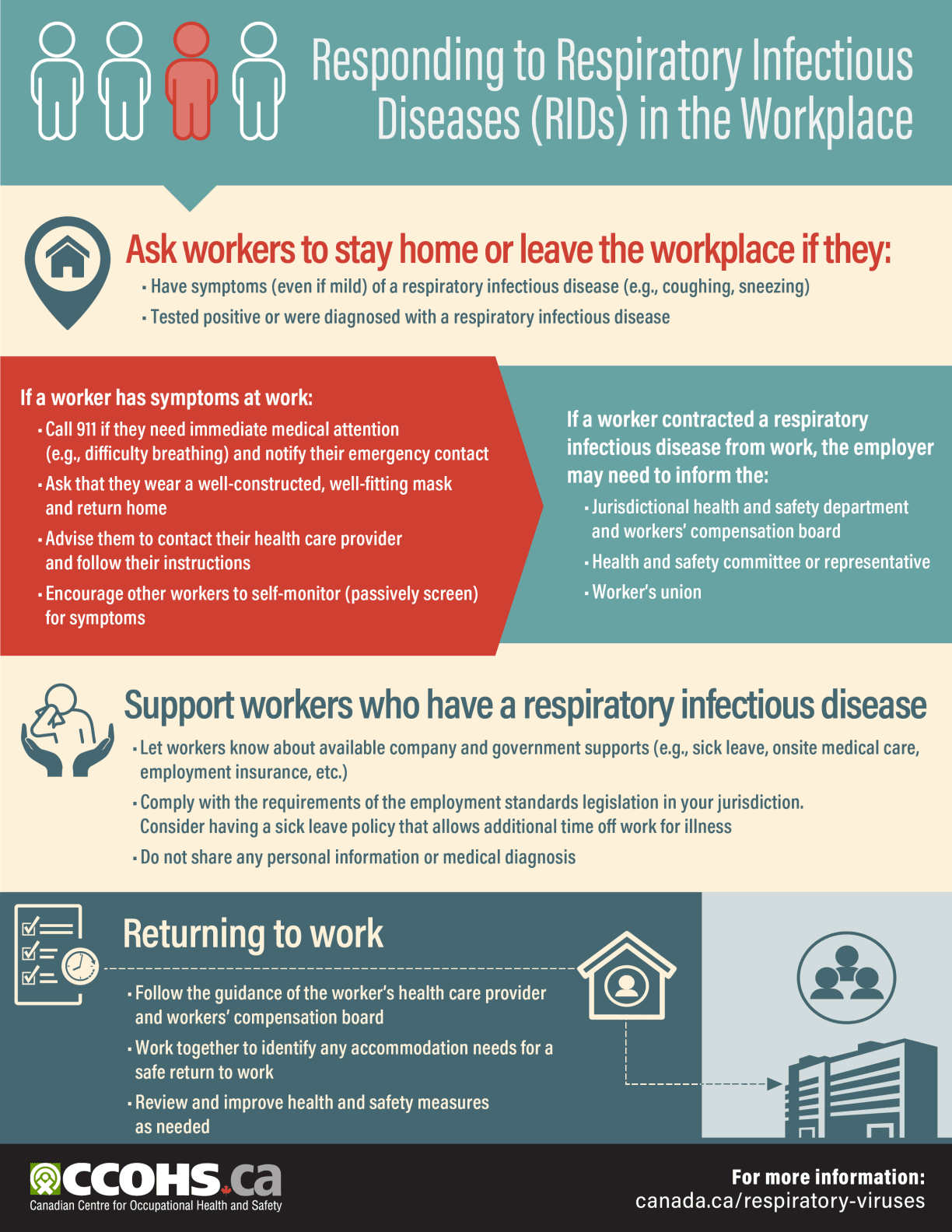Description: Responding to Respiratory Infectious Diseases (RIDs) in the Workplace
[PNG, 108 KB]

Description: Responding to Respiratory Infectious
Diseases (RIDs) in the Workplace
Ask workers to stay home or leave the workplace if they:
- Have symptoms (even if mild) of a respiratory infectious disease (e.g., coughing, sneezing)
- Tested positive or were diagnosed with a respiratory infectious disease
If a worker has symptoms at work:
- Call 911 if they need immediate medical attention (e.g., difficulty breathing) and notify their emergency contact
- Ask that they wear a well-constructed, well-fitting mask and return home
- Advise them to contact their health care provider and follow their instructions
- Encourage other workers to self-monitor (passively screen) for symptoms
If a worker contracted a respiratory infectious disease from work, the employer may need to inform the:
- Jurisdictional health and safety department and workers’ compensation board
- Health and safety committee or representative
- Worker’s union
Support workers who have a respiratory infectious disease
- Let workers know about available company and government supports (e.g., sick leave, onsite medical care, employment insurance, etc.)
- Comply with the requirements of the employment standards legislation in your jurisdiction. Consider having a sick leave policy that allows additional time off work for illness
- Do not share any personal information or medical diagnosis
Returning to work
- Follow the guidance of the worker’s health care provider and workers’ compensation board
- Work together to identify any accommodation needs for a safe return to work
- Review and improve health and safety measures as needed
More information: canada.ca/respiratory-viruses
Document last updated on: 2023-11-30

